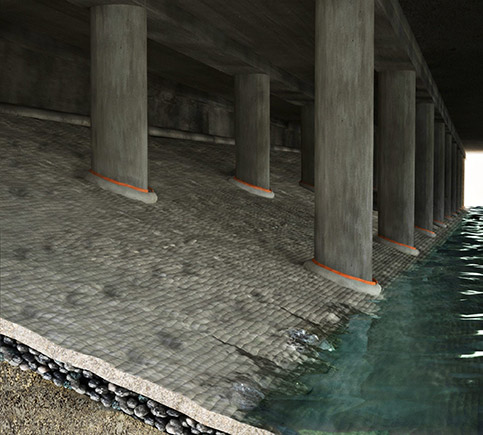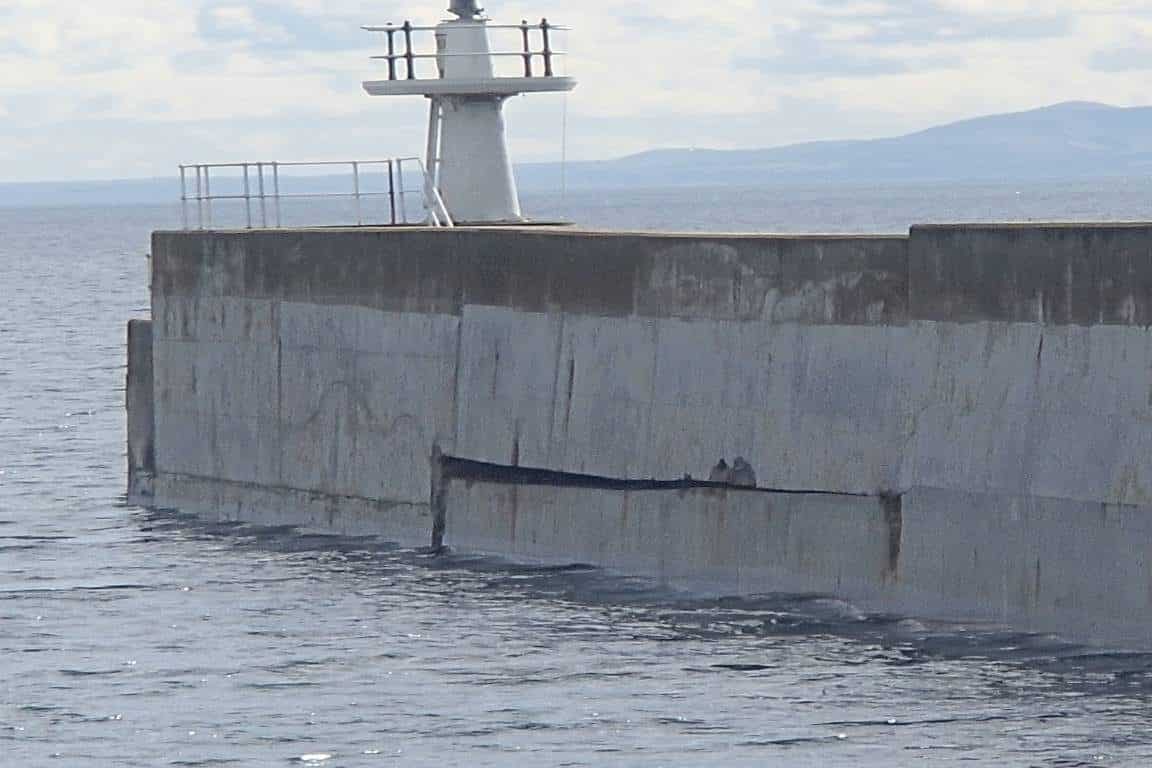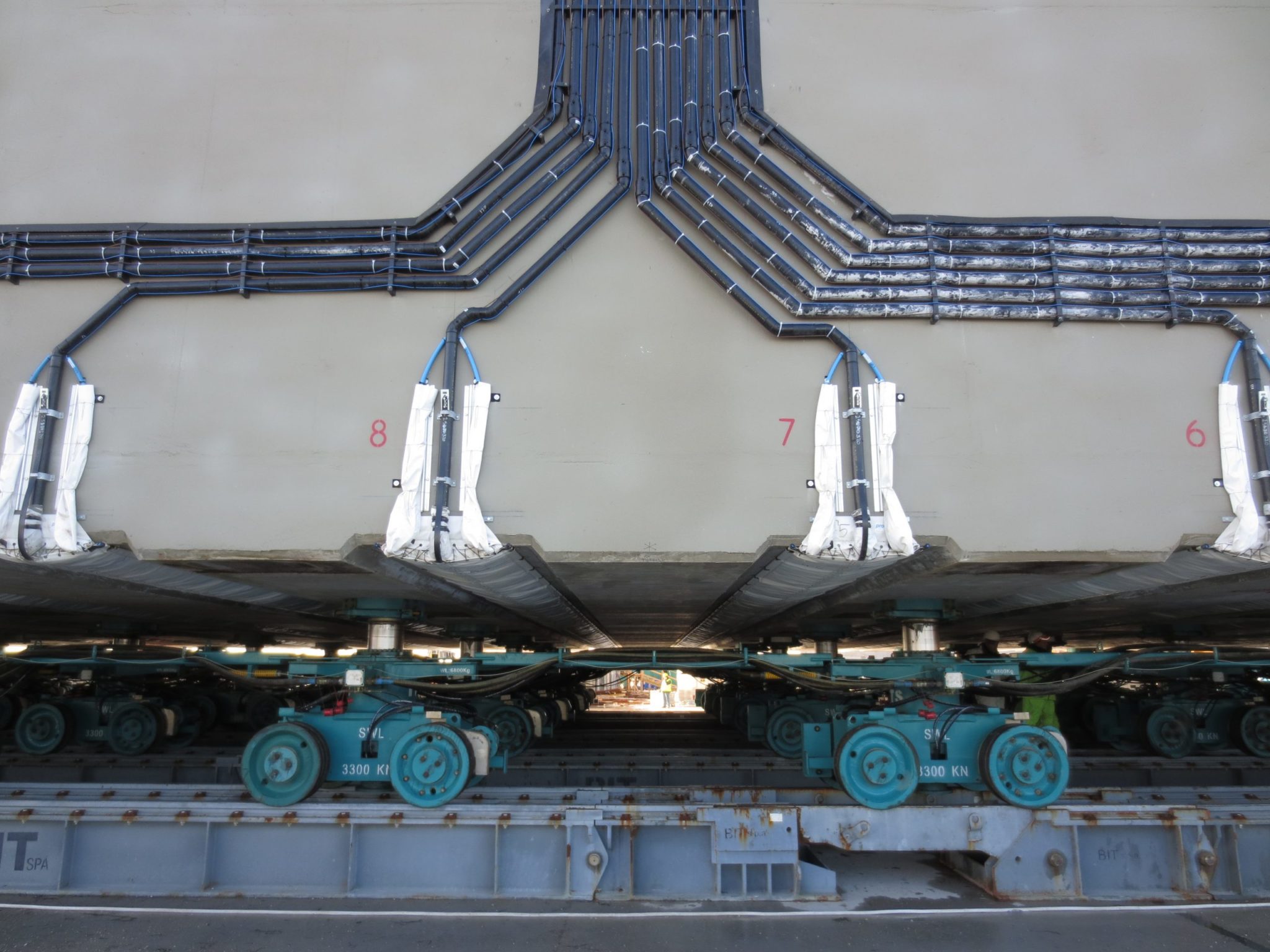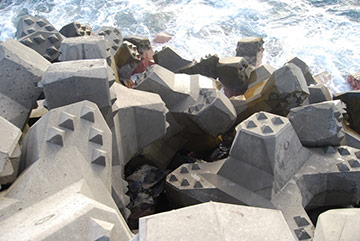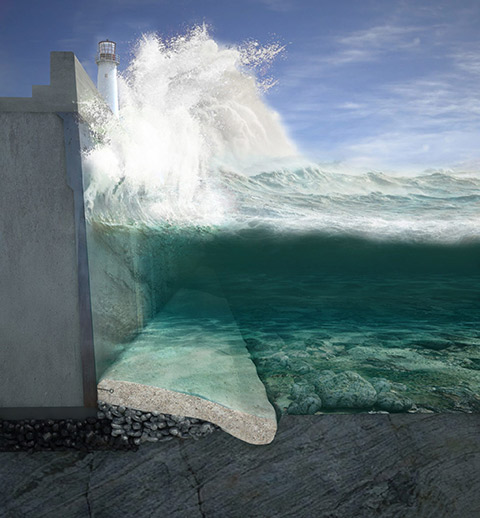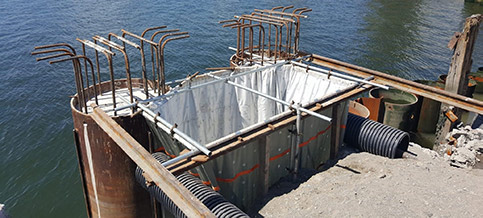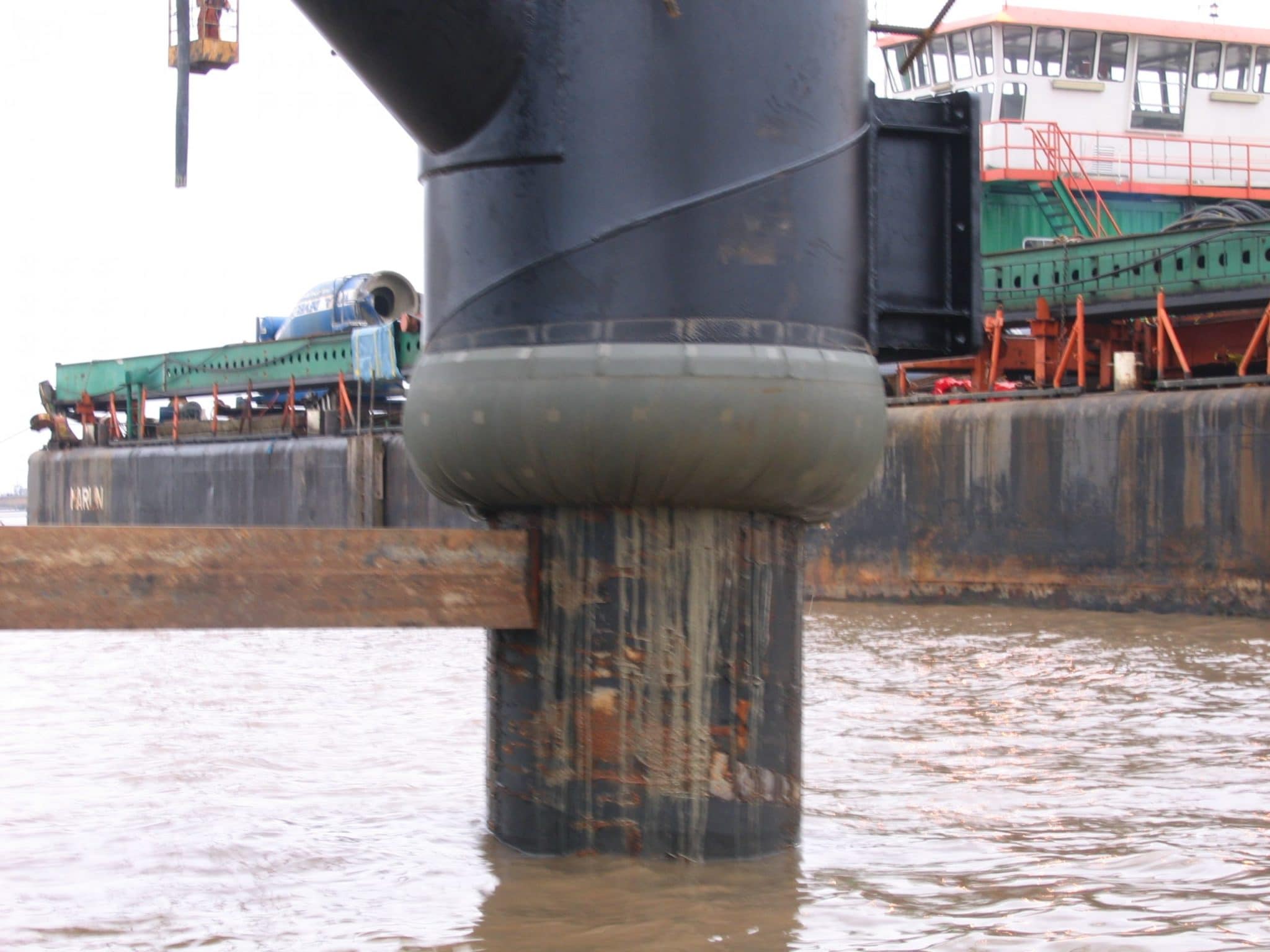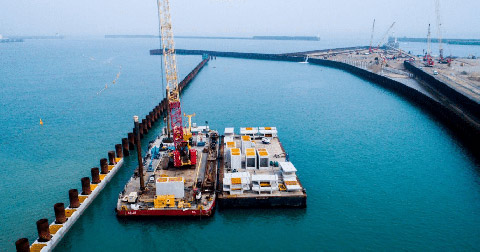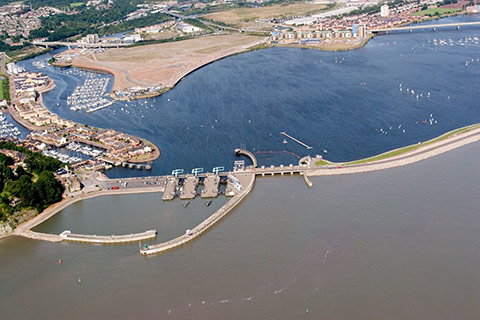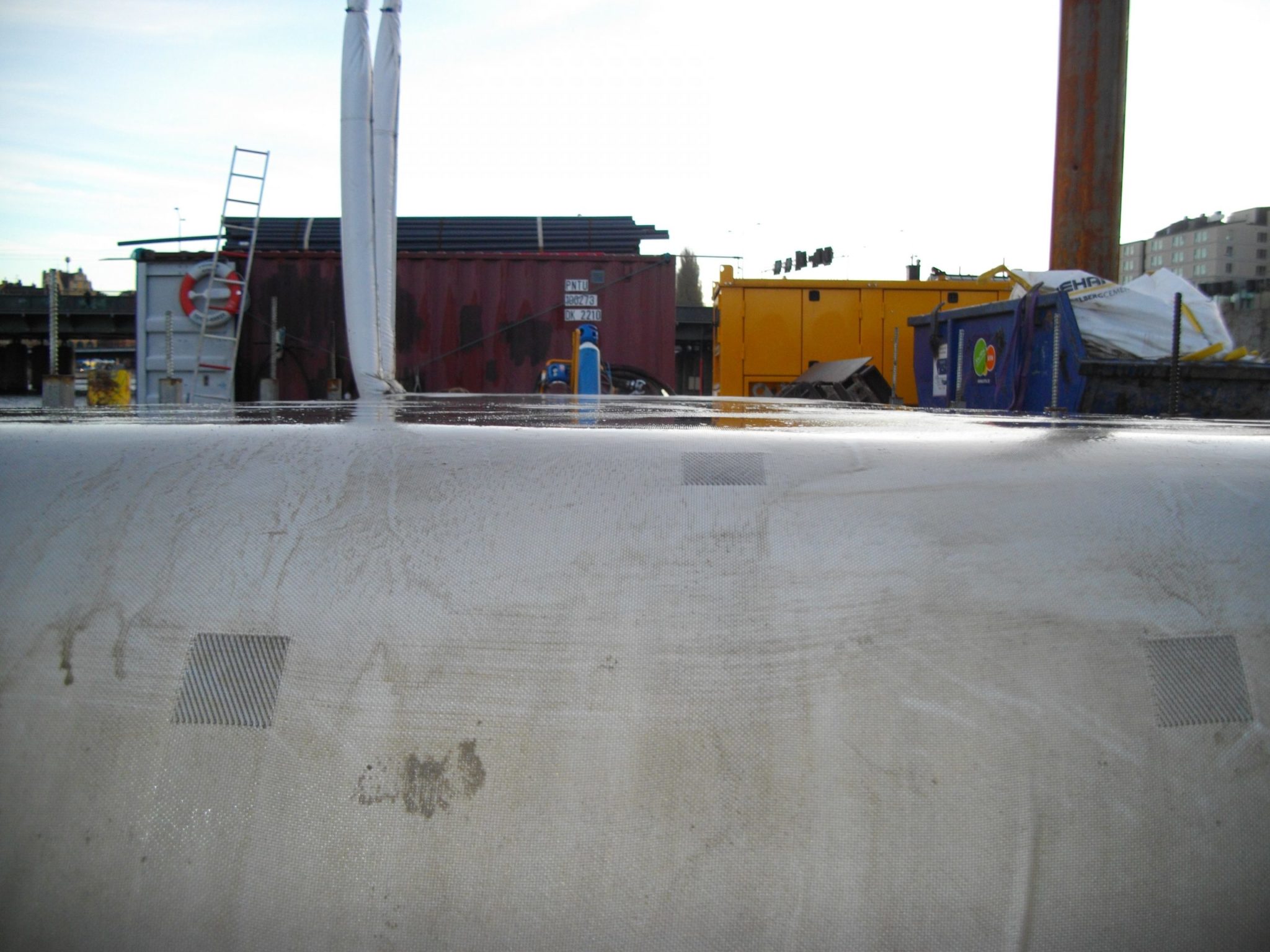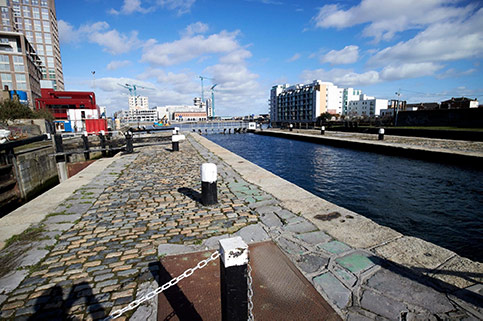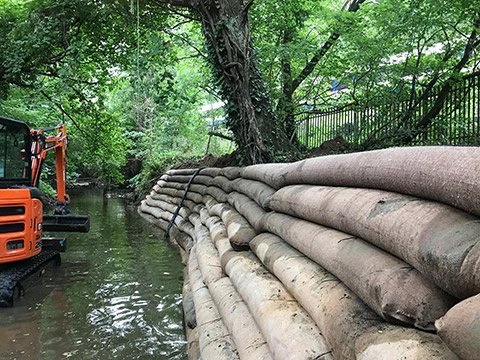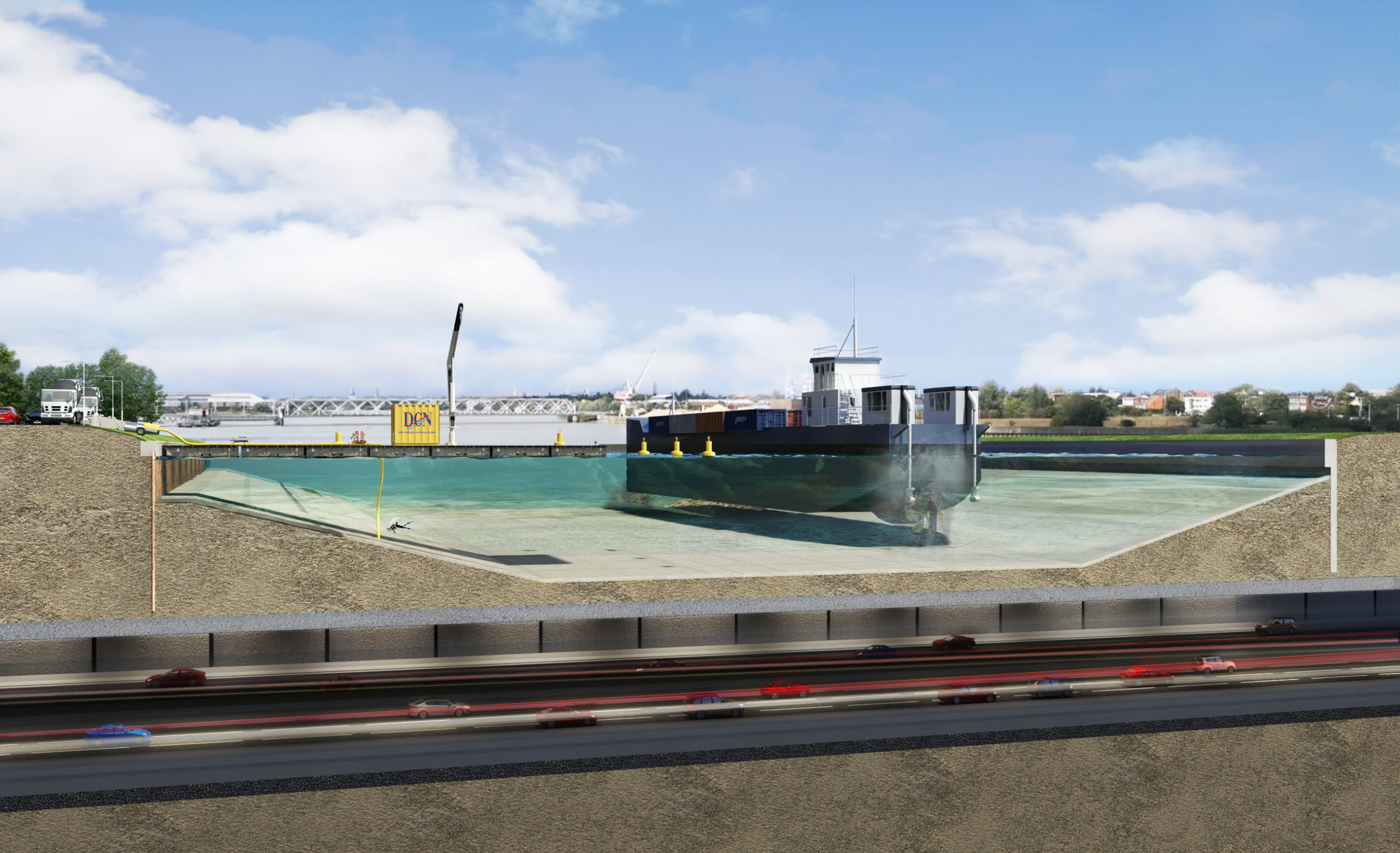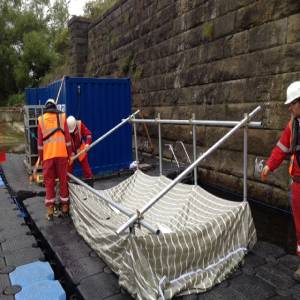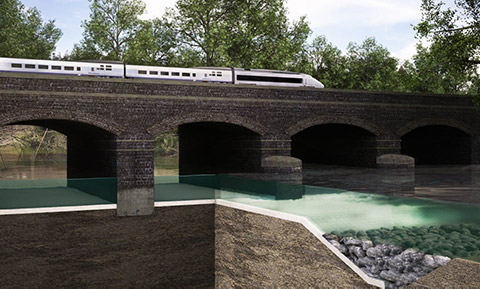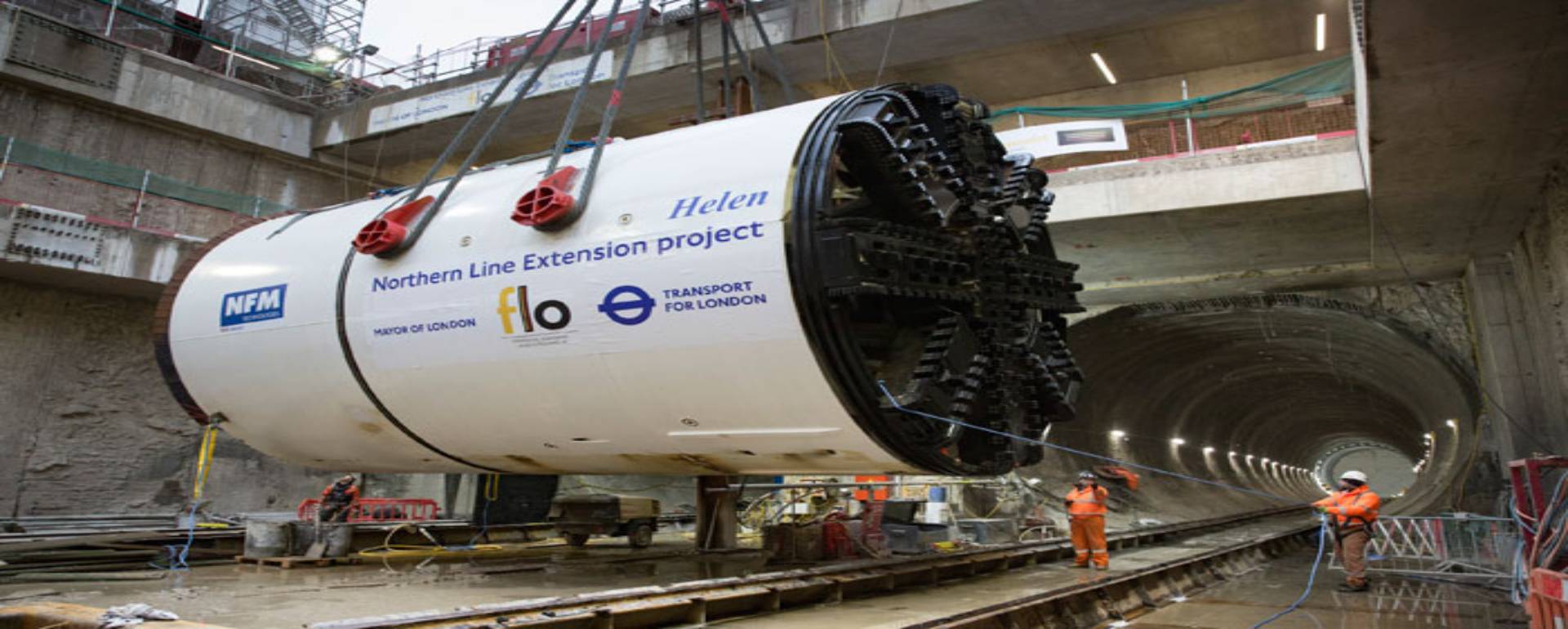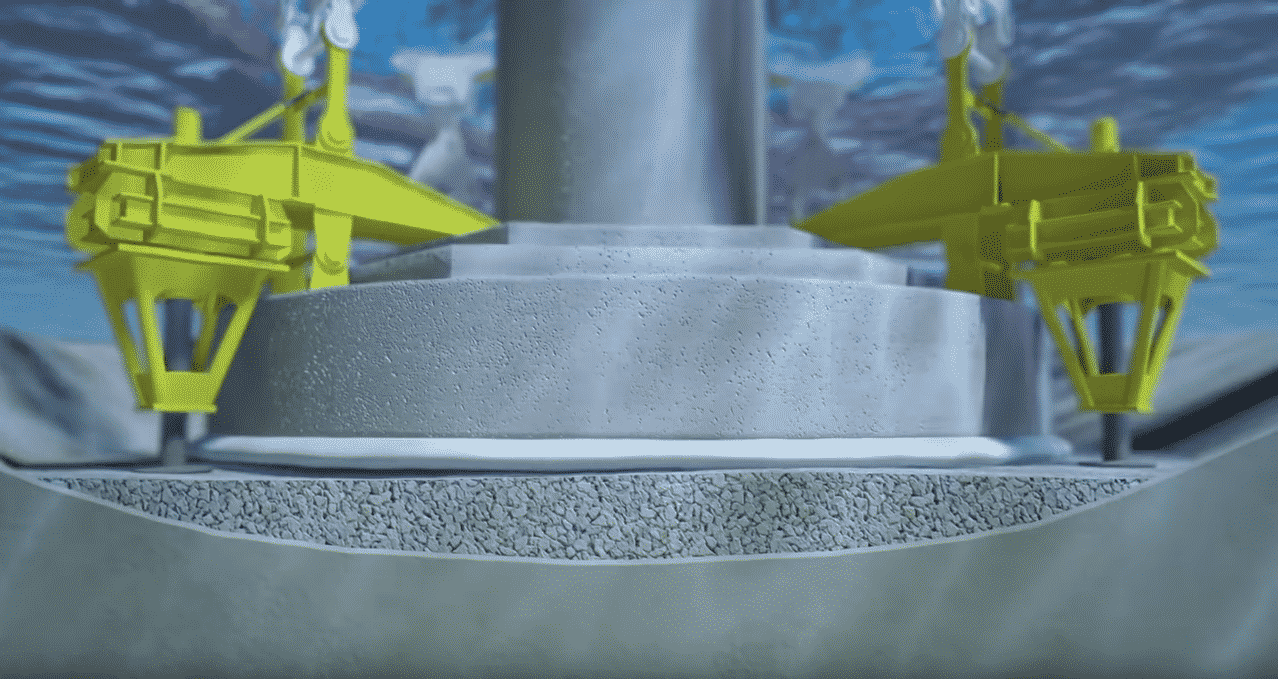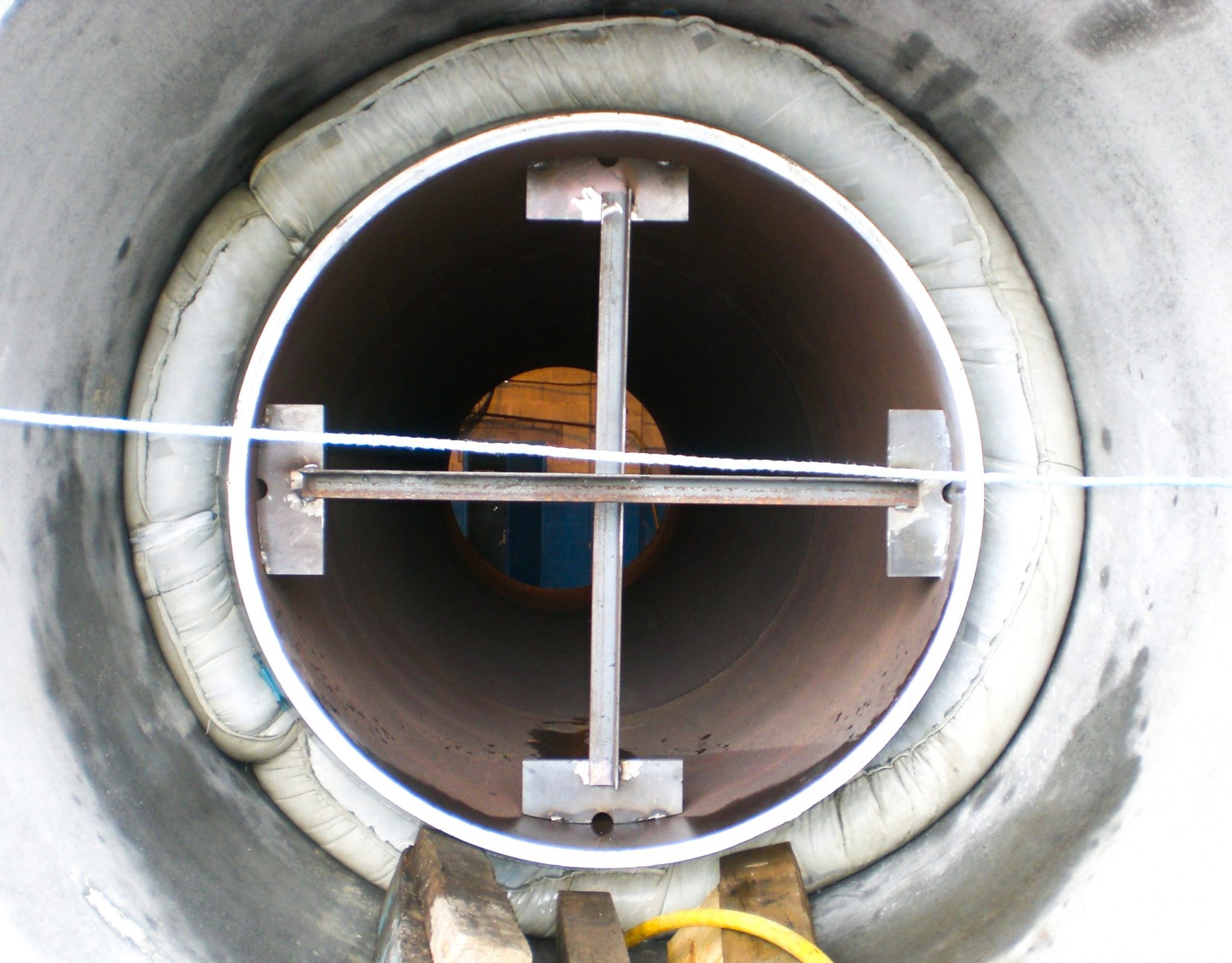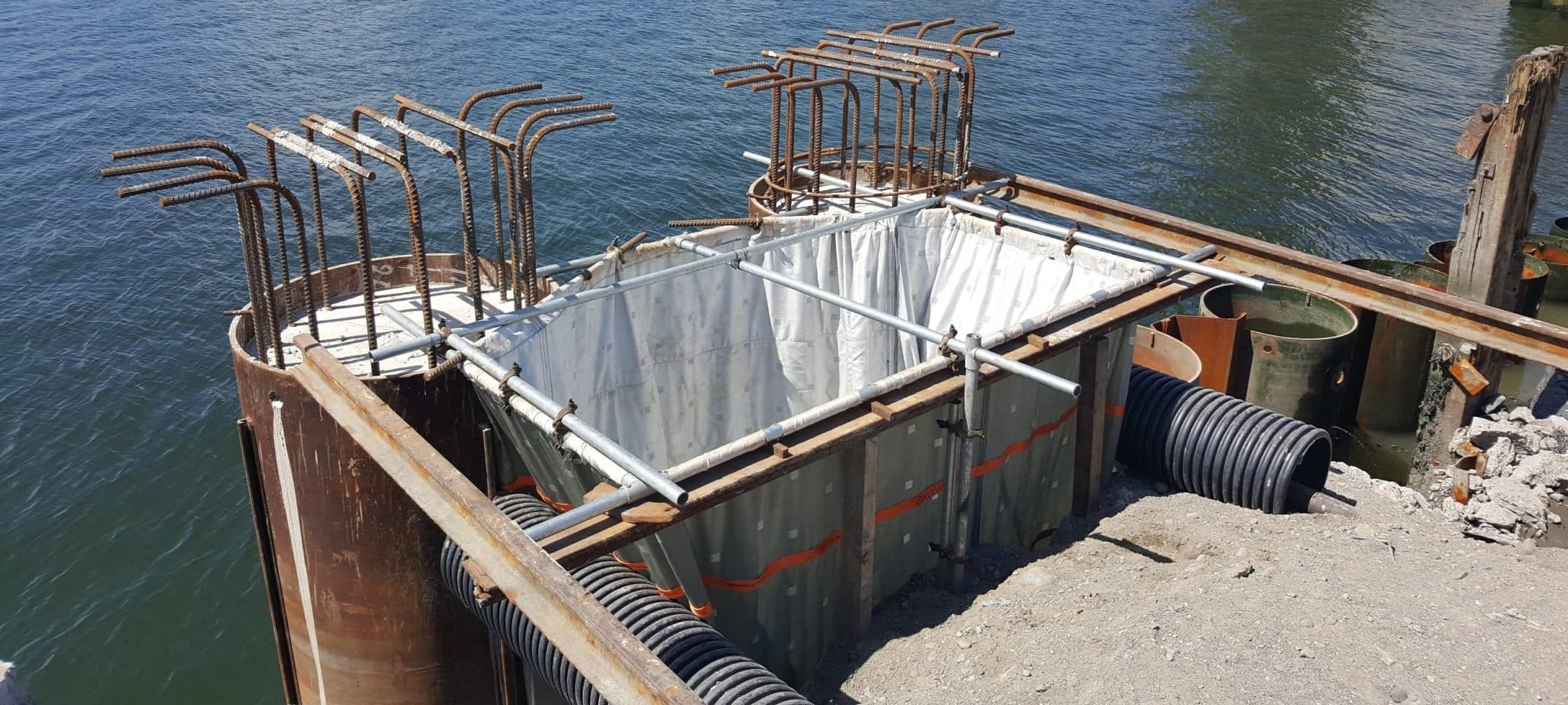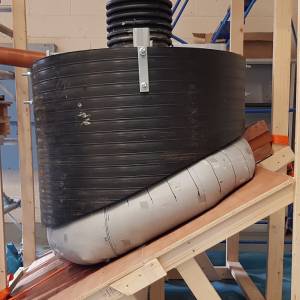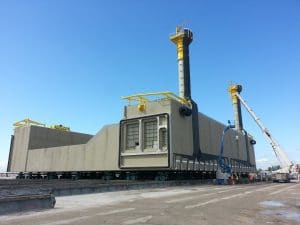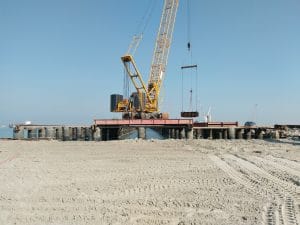Concreting Underwater
Casting concrete or grout in the marine environment has added complications compared to casting on land in the dry. The type of concrete or grout to be used for underwater works can vary greatly and depends heavily on the requirements of the permanent works and the installation conditions.
Mix Engineering
Each project has different requirements and conditions. Our Engineers advise on mix design, development and testing to ensure the mixes achieve the project specific requirements, including:
- Strength
- Fluidity
- Pumpability
- Density
- Fluid period
There are 3 main types of mix used when casting concrete or grout underwater in fabric formwork:
Micro-concrete (or fine-aggregate concrete)
The common mix is micro-concrete made up from 2-parts sand to 1-part cement mix with a maximum aggregate size of 5-10mm and a water cement ratio of 0.55. The high water:cement ratio benefits the pumpability and fluidity required for filling the fabric formwork. This mix has been used successfully for over 50 years readily achieves C28/35 and meets the requirements of EC2 (through BS8500) for a design life of over 50 years and BS6349 for 100 years when unreinforced.
Our engineers will review the sand gradings of the contractor’s proposed sands and recommend a sand or blend for optimal workability to be confirmed through a short pumping trial on site before construction starts.
Fabric formwork has high porosity combined with a tight weave that forces water and air to leave the formwork during filling but retains the sand and cement particles. This leads to a drop in water:cement ratio within the formwork down to around 0.4, resulting in:
- Higher density
- Greater surface abrasion resistance
- No honeycombing
- Entrapped water
- Strength increase compared to the same mix cast in conventional cube moulds or formwork
Where higher strengths or other non-standard characteristics are required, additional mix development can be undertaken with our engineers prior to construction to ensure a local mix is developed that meets the project’s requirements.
Neat Cement Grout
Neat cement grouts are frequently used when the sand in micro-concrete would have a detrimental effect on the reliability of the construction process. Neat cement grouts are highly fluid and ideally suited to applications where long pumping distances or exceptional reliability are required, or when filling small voids. Typical strengths can be achieved of 50-70N/mm² depending on the fluidity of the mix.
Conventional Concrete
Where pumpability, workability and fluidity are of low concern, concrete with 20-25mm aggregate can be used. This is less common when working with fabric formworks, but it usually allows a reduction in cement content and therefore cost.
Additives
Micro-concretes are usually retarded to give a “fluid period” of at least 2 hours on site to allow complete filling of the fabric formwork compartment, allowing some margin for delays. Anti-shrink additives are commonly used to micro-concrete and neat cement grout applications when a void must be tightly filled for a following construction process.
Air entrainment can be employed where a controlled density is required while also reducing the strength of the mix. Cement replacement using PFA, GGBS or limestone filler is often used if advantageous to the specific project requirements, each has particular characteristics which make it more or less suitable to different scenarios.
Fluidity control via flow cone
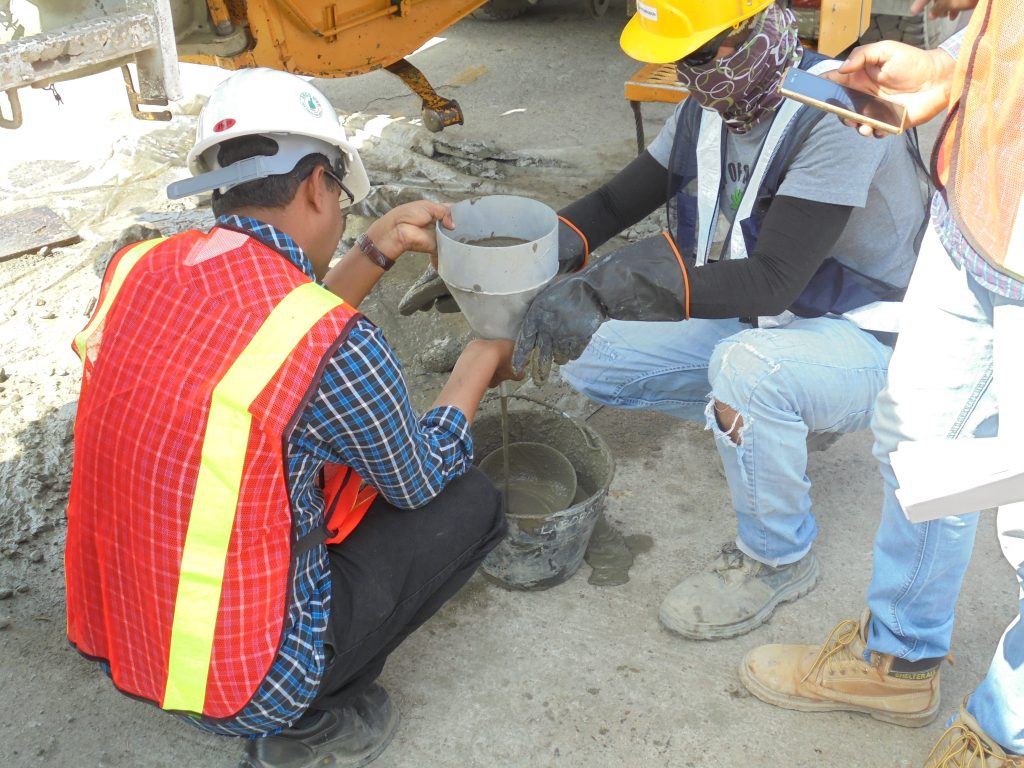
The mix fluidity is an essential parameter for reliable construction with fabric formwork. For a particular mix the fluidity can vary with the granulometry and moisture content of the sand. The water content in the mix should be adjusted to suit the specific sand, optimising fluidity while minimising the risk of segregation. It is essential for reliability of construction that every mix is checked and adjusted as required prior to pumping using the Proserve Flowcone in line with our installation guidance.


